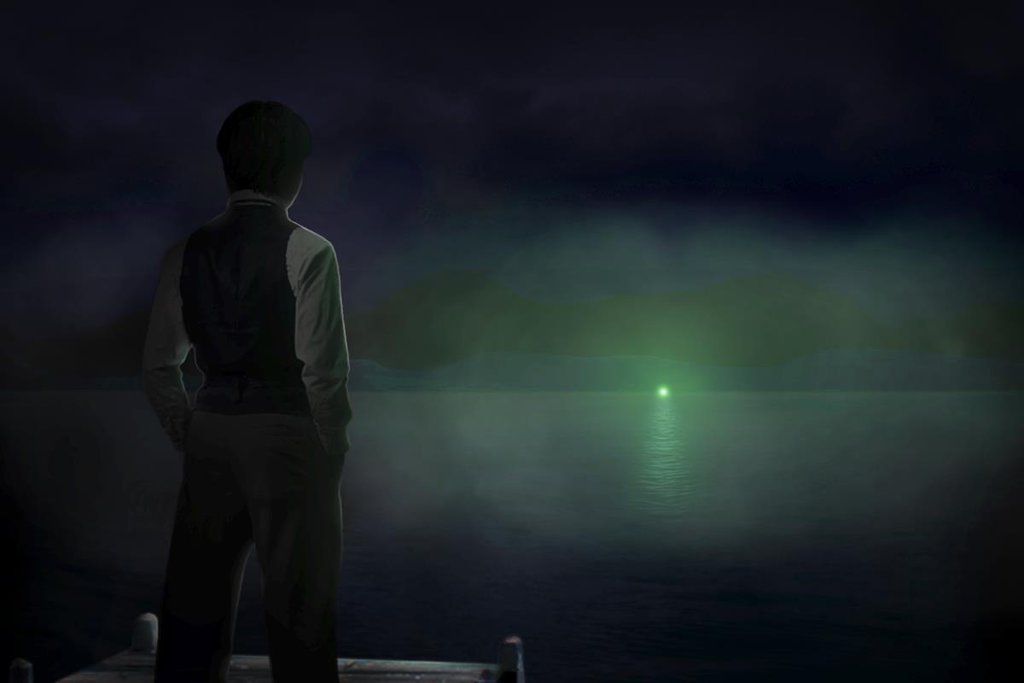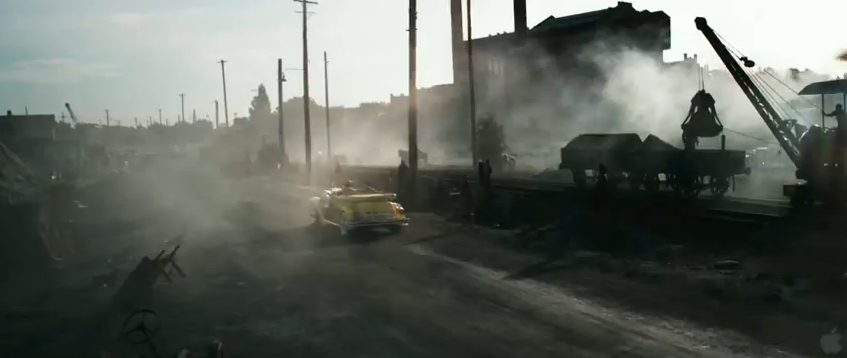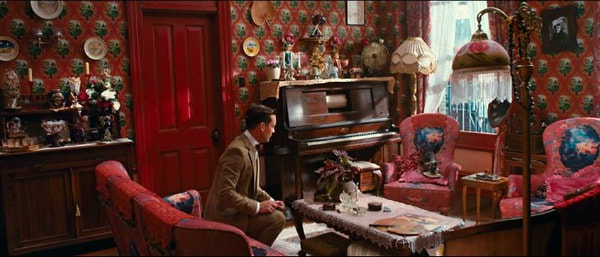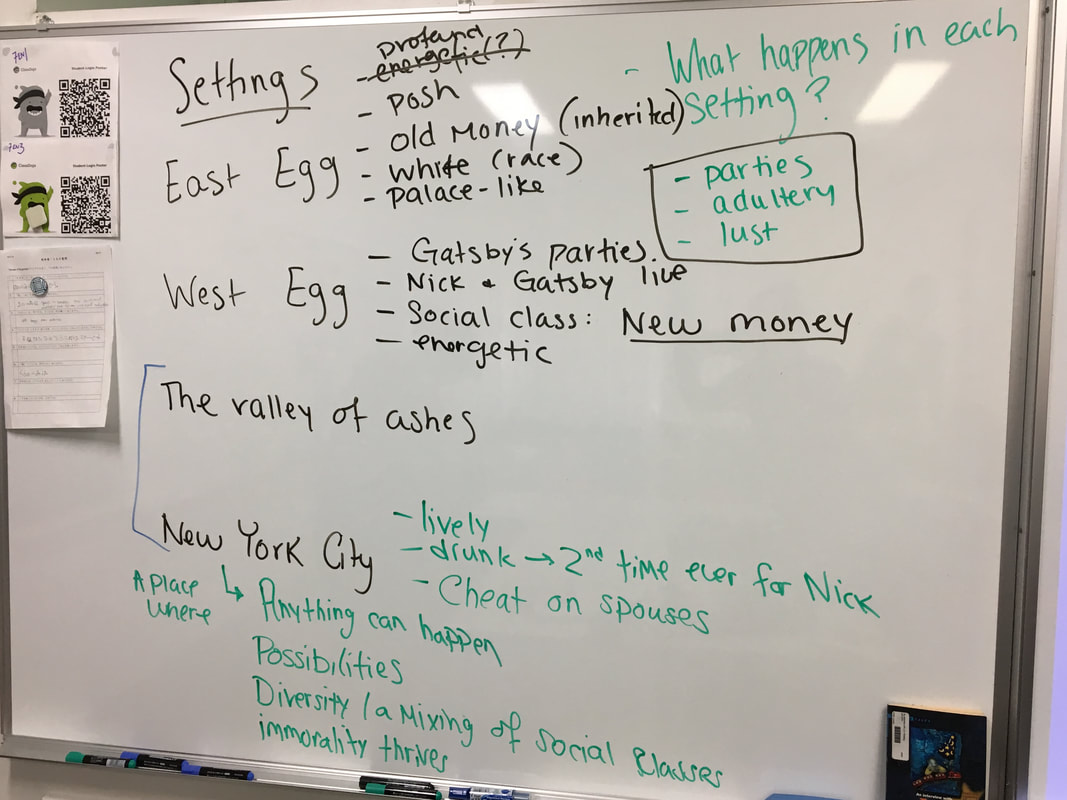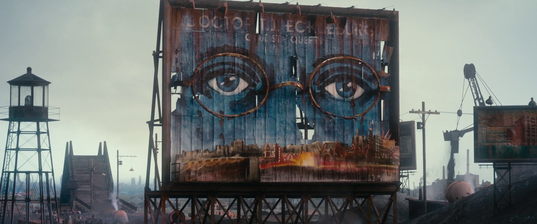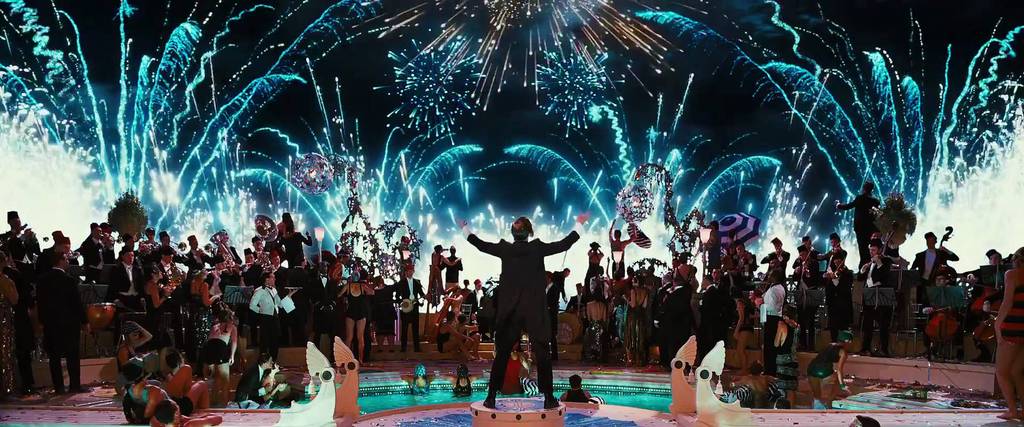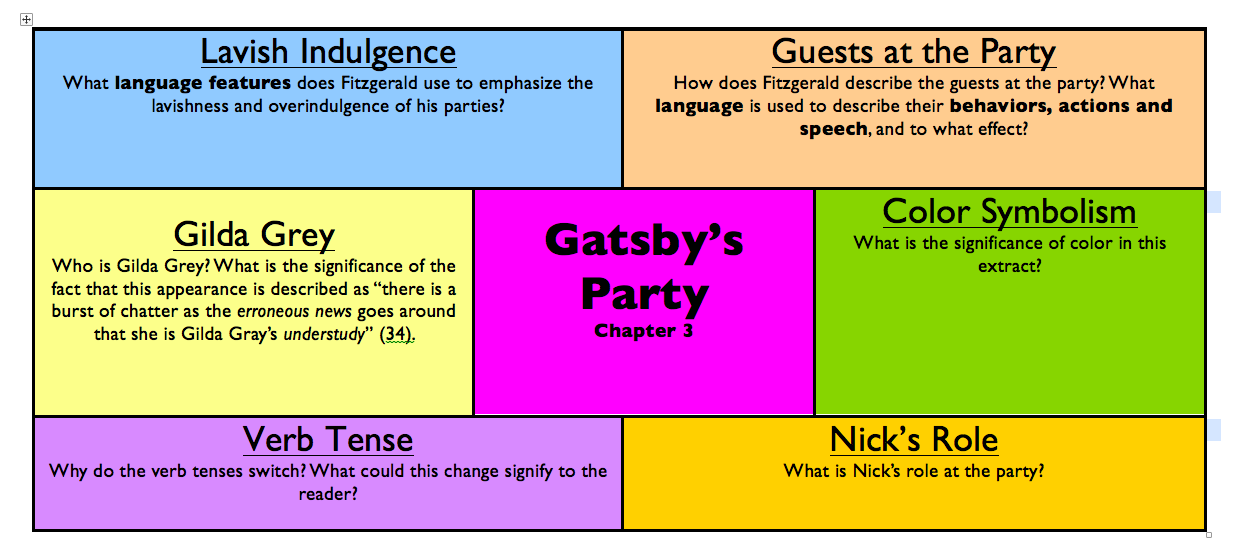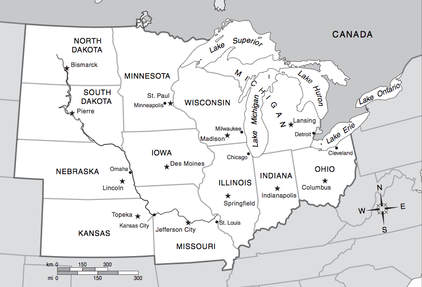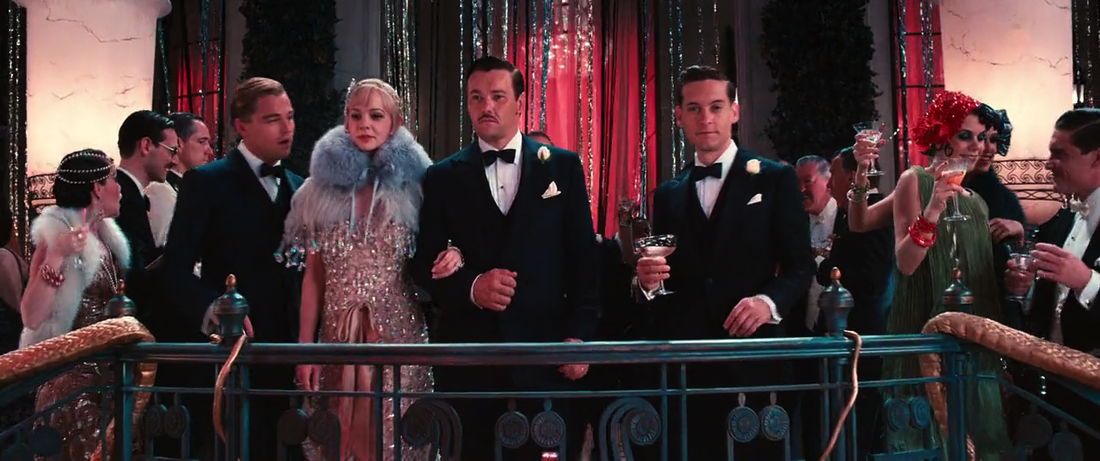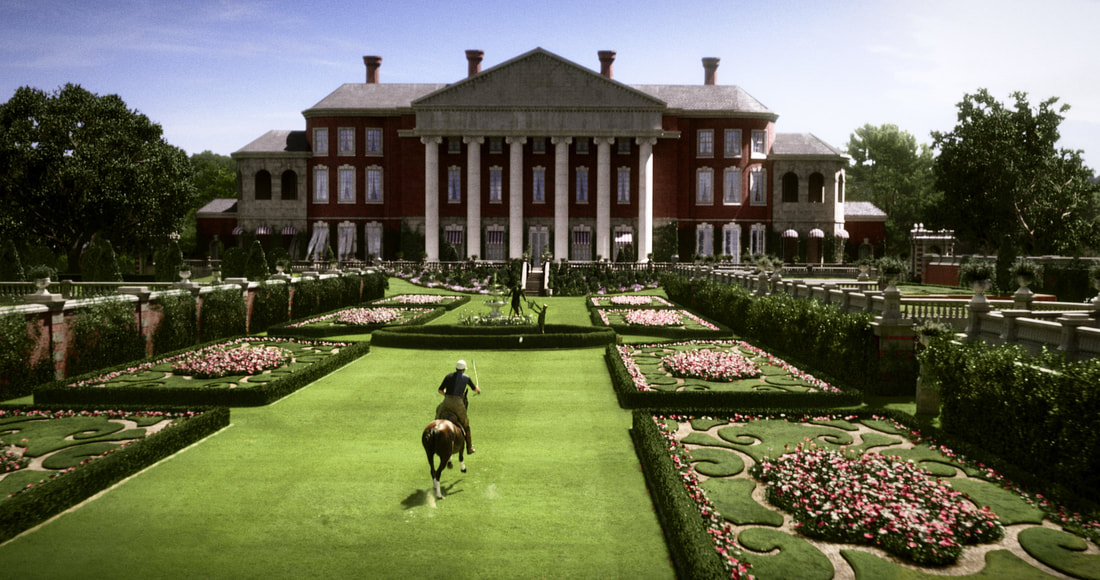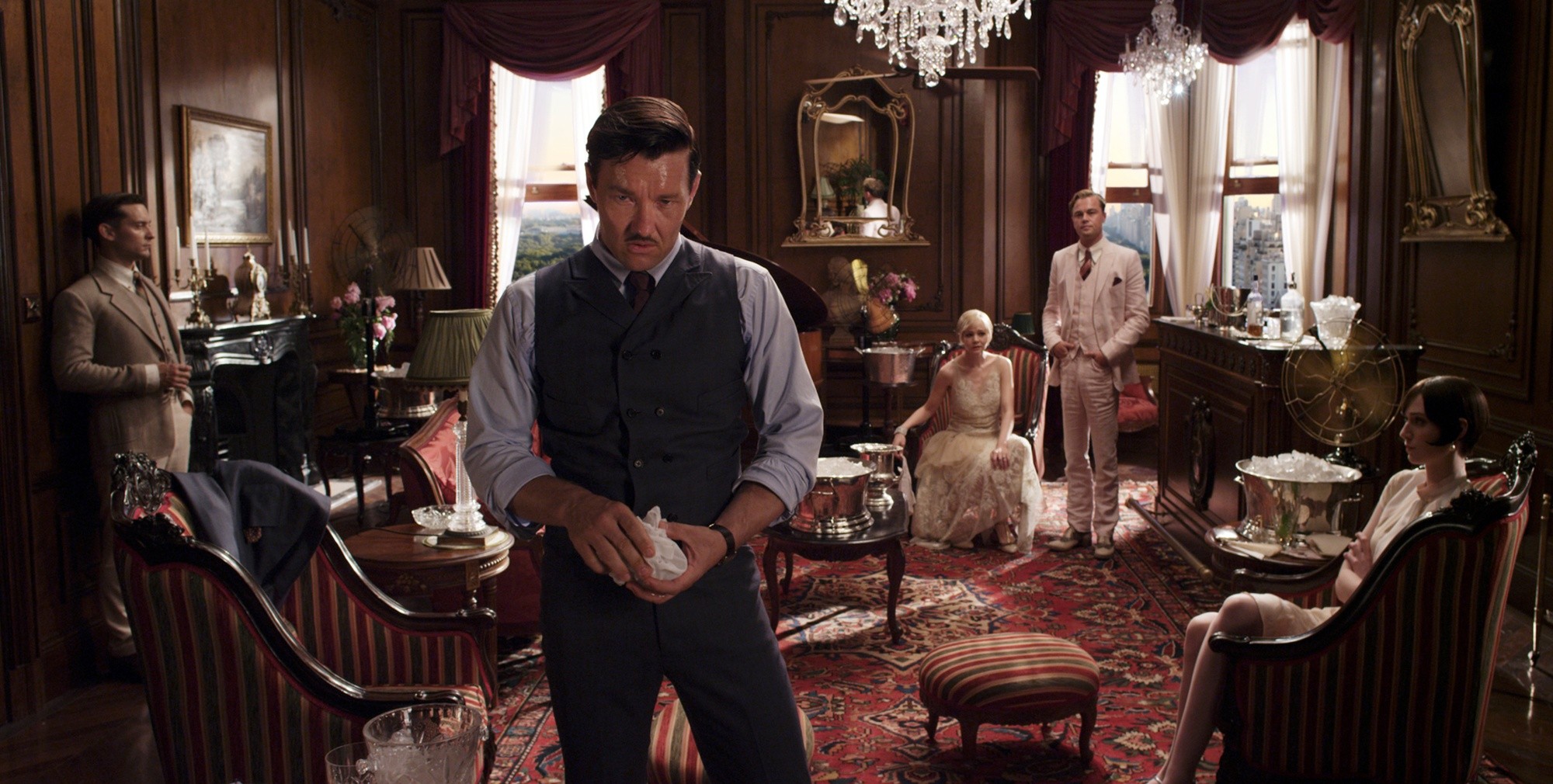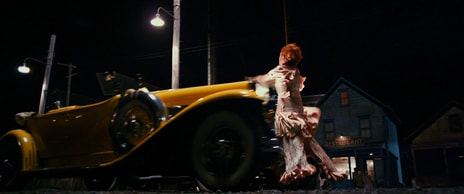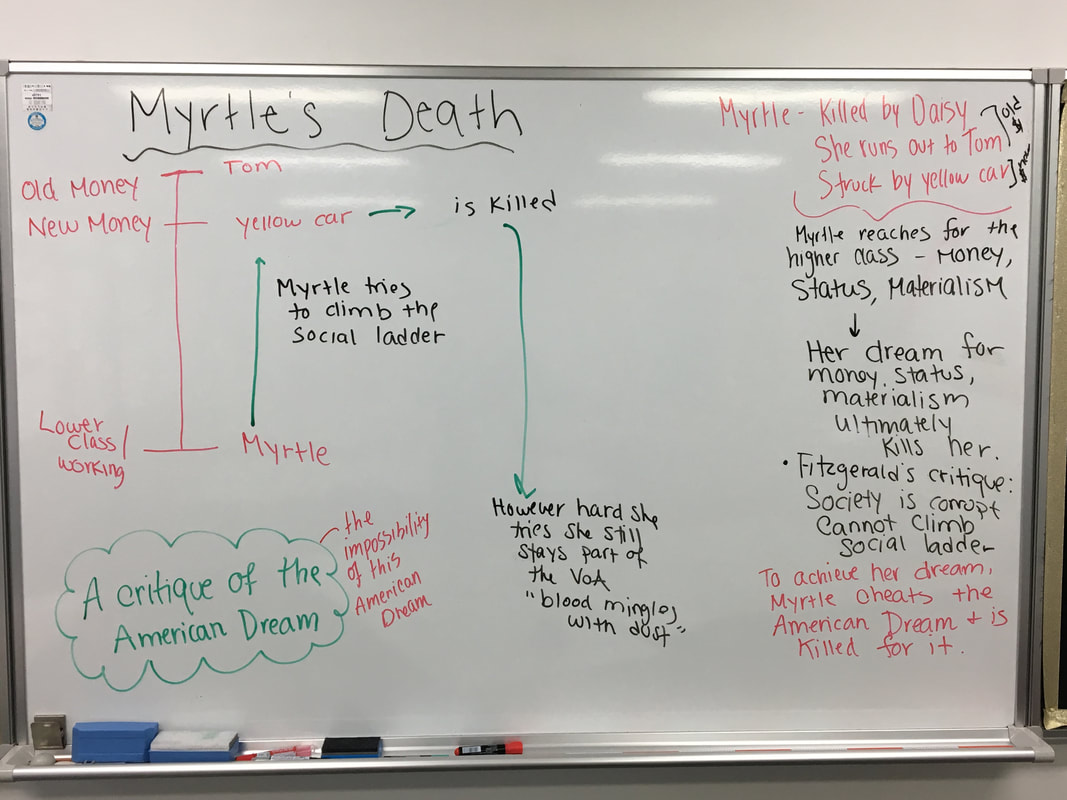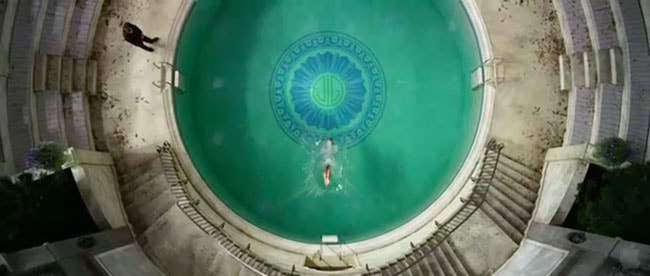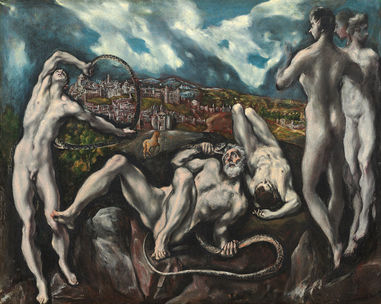The Roaring 20s The Jazz Age
"The Great Gatsby takes place during the summer of 1922. Fitzgerald coined the phrase, 'the Jazz Age' that same year to describe the flamboyant—'anything goes'—era that emerged in America after World War I. Find out more about the popular culture and historical events that shaped and defined the 1920s"
Click HERE for source
Task: Teach the rest of the class about the 1920s through a Padlet web board. Include relevant photos, statistics, anecdotes, videos, and any other information you discover. Your classmates should be able to interact with this web board on their own in order to learn more about the topic.
Click HERE to access Padlet. Someone must quickly register.
Click HERE for source
Task: Teach the rest of the class about the 1920s through a Padlet web board. Include relevant photos, statistics, anecdotes, videos, and any other information you discover. Your classmates should be able to interact with this web board on their own in order to learn more about the topic.
Click HERE to access Padlet. Someone must quickly register.
|
Prohibition
Click HERE for class Padlet |
Who is F. Scott Fitzgerald?
|
|
F. Scott Fitzgerald: The Great American Dreamer
Part 1 of a documentary about the author of The Great Gatsby. Please watch Parts 2 &3, as well. Note down information on the following:
|
The American Dream
Essential Question:
Essential Question:
- What is the American Dream?
- What might get in the way of the America Dream being accomplished?
After watching the video clips, describe the American Dream in your own words.
|
|
|
|
Chapter One: Introductions
Essential Question:
- What do Fitzgerald's language choices tell the reader about East and West Egg and the characters who live there?
Starter:
Who is Nick Carraway?
What do we know about him?
How does he describe himself?
What type of narrator is he?
Who is Nick Carraway?
What do we know about him?
How does he describe himself?
What type of narrator is he?
| chapter_1_-_setting_and_character.docx | |
| File Size: | 101 kb |
| File Type: | docx |
|
"I saw that I was not alone--fifty feet away a figure had emerged from the shadow of my neighbor's mansion and was standing with his hands in his pockets regarding the silver pepper of the stars. Something in his leisurely movements and the secure position of his feet upon the lawn suggested that it was Mr Gatsby himself, come out to determine what share was his of our local heavens.
I decided to call to him. Miss Baker had mentioned him at dinner, and that would do for an introduction. But I didn't call to him, for he gave a sudden intimation that he was content to be alone-- he stretched out his arms toward the dark waters in a curious way, and, far as I was from him, I could have sworn he was trembling. Involuntarily I glanced seaward--and distinguished nothing except a single green light, minute and far away, that might have been the end of a dock. When I looked once more for Gatsby he had vanished, and I was alone again in the unquiet darkness" (20). |
|
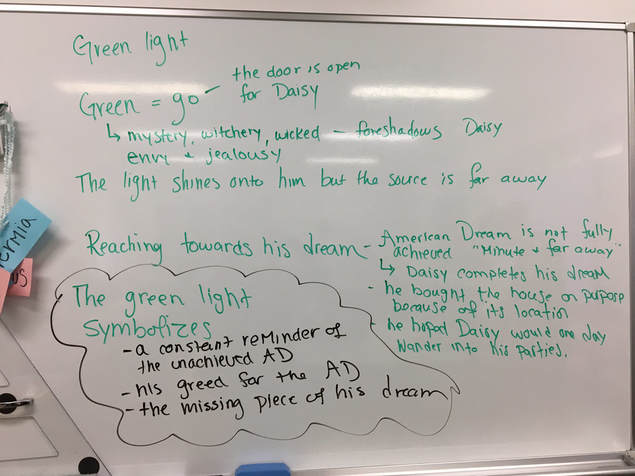
Symbolism: the green light
Chapter 2: voA & NYC
Essential Question:
- How are the different settings indicative of Fitzgerald’s attitude towards society?
- What happens in each setting?
- Myrtle buys a dog in the city, the furniture in Tom’s apartment is overabundant and gaudy, and Myrtle changes outfits several times. What do these actions reveal about her character / symbolize? Identify the moments in the chapter.
- What does the scene in this New York apartment reveal about Tom?
- What does Nick say to prove that he is being corrupted by the East?
Essential Question:
- To what extent is the valley of ashes a critique of society?
| extract_-_the_valley_of_ashes.docx | |
| File Size: | 159 kb |
| File Type: | docx |
- Characters: Who lives here? What is their life like?
- Diction: Identify all of the adjectives, adverbs that are used to describe the valley of ashes.
- Why type of diction is used? Classify it (see box below)
- What is the implied meaning of these various words?
- Imagery: Identify any similes and metaphors used to describe the valley of ashes. What do they mean and why have they been used?
- Colours: What colours are mentioned in this extract? What might the colours symbolise?
- Symbolism: Pick apart the billboard of the eyes of T.J. Eckleburg. There are multiple interpretations for this billboard, as it is a major symbol in the novel. What do the eyes/billboard symbolise? Consider the way Fitzgerald uses this object, its position, its location to criticize society.
- Juxtaposition (definition: a literary technique in which two or more ideas, places, characters and their actions are placed side by side in a narrative or a poem for the purpose of developing comparisons and contrasts).
-Identify the juxtaposition between chapters 1 and 2. Why has Fitzgerald created this contrast?
-Identify the way in which the characters juxtapose one another. How does this contrast emphasise the differences in class/society? - Themes: Based on our quick analysis, what are some central themes that are emerging from this scene?
Classifying diction: Examples
- simple, plain, colloquial, informal
- elevated, literary, poetic, formal
- concrete, precise
- obscure, technical, pedantic
- vulgar, pejorative
- standard English/Non-Standard English, a regional dialect, slang
Click the images on the right to go through other class boards for this extract.
Essential Questions
- How does Fitzgerald use Gatsby's party to criticize 1920s society? What elements of society does Fitzgerald expose?
Task: Circle the room and visit each station. Read the passage on the wall and the corresponding questions. With the people at your station, discuss the passage and annotate the paper. If you see evidence of any of the questions below, write it on a post-it note (include the page number) and stick it to the corresponding question at the front of the room.
|
Glossary:
| ||||||
Questions for Close Reading:
- Where do you see evidence of the lavish indulgence of Gatsby's parties?
- Notice the verb tenses in this passage. When do they switch?
- Where do you see evidence of Gatsby's "new money" status?
- Who is Gilda Grey? Do a quick Google search and make note of her identity.
- What colors appear in this extract? Identify them.
- How does Fitzgerald describe the guests at the party? How do they act?
- What is Nick's role in this passage?
- Find some of the glossary words in the passage. Define them in context and consider what the sentence means.
| ch3_-_party_extract.docx | |
| File Size: | 136 kb |
| File Type: | docx |
Essential Questions
- How does Fitzgerald use Gatsby's party to criticize 1920s society? What elements of society does Fitzgerald expose?
With your group, discuss your assigned topic / feature. Find examples to support your ideas. Be sure to label specific literary features as you come across them. You will share your analysis with the rest of the class.
| puzzle_-_gatsbys_party_.docx | |
| File Size: | 118 kb |
| File Type: | docx |
Literary Devices
Polysyndeton is a stylistic device in which several coordinating conjunctions are used in succession in order to achieve an artistic effect.
Example: “Let the whitefolks have their money and power and segregation and sarcasm and big houses and schools and lawns like carpets, and books, and mostly–mostly–let them have their whiteness.”
(Maya Angelou, I Know Why the Caged Bird Sings)
Metaphor is a figure of speech which makes an implicit, implied or hidden comparison between two things that are unrelated but share some common characteristics. In other words, a resemblance of two contradictory or different objects is made based on a single or some common characteristics.
Allusion is a brief and indirect reference to a person, place, thing or idea of historical, cultural, literary or political significance. It does not describe in detail the person or thing to which it refers. It is just a passing comment and the writer expects the reader to possess enough knowledge to spot the allusion and grasp its importance in a text.
Example: The rise in poverty will unlock the Pandora’s box of crimes. – This is an allusion to one of Greek Mythology’s origin myth, “Pandora’s box”.
Usually, mood is referred to as the atmosphere of a literary piece, as it creates an emotional situation that surrounds the readers. Mood is developed in a literary piece through various methods. It can be developed through setting, theme, tone and diction.
Polysyndeton is a stylistic device in which several coordinating conjunctions are used in succession in order to achieve an artistic effect.
Example: “Let the whitefolks have their money and power and segregation and sarcasm and big houses and schools and lawns like carpets, and books, and mostly–mostly–let them have their whiteness.”
(Maya Angelou, I Know Why the Caged Bird Sings)
Metaphor is a figure of speech which makes an implicit, implied or hidden comparison between two things that are unrelated but share some common characteristics. In other words, a resemblance of two contradictory or different objects is made based on a single or some common characteristics.
Allusion is a brief and indirect reference to a person, place, thing or idea of historical, cultural, literary or political significance. It does not describe in detail the person or thing to which it refers. It is just a passing comment and the writer expects the reader to possess enough knowledge to spot the allusion and grasp its importance in a text.
Example: The rise in poverty will unlock the Pandora’s box of crimes. – This is an allusion to one of Greek Mythology’s origin myth, “Pandora’s box”.
Usually, mood is referred to as the atmosphere of a literary piece, as it creates an emotional situation that surrounds the readers. Mood is developed in a literary piece through various methods. It can be developed through setting, theme, tone and diction.
Chapter 4
Nick and Gatsby Go to NYC
Essential Questions
Scenes
- What does chapter 4 reveal about Gatsby's character?
Scenes
- Gatsby and Nick drive to NYC: pages 51-53
- What does the reader learn about Gatsby during this car ride?
- Does Gatsby seem genuine? Why or why not?
- Nick meets Meyer Wolfsheim: pages 55-59
- What is Gatsby's relationship with Meyer Wolfsheim? What can we infer about their relationship?
- What's the purpose of introducing the character of Meyer Wolfsheim? Look up Arnold Rothstein for more info.
- Gatsby: read Gatsby's lines and act out his movements according to the text
- Nick (dialogue and actor): Read Nick's lines and act out his movements according to the text
- Nick (narrator): Read Nick's narration
- Meyer Wolfsheim (dialogue and actor)
- Director: Stop the actors and provide suggestions to ensure they are remaining faithful to Fitzgerald's vision for this chapter.
Chapter 5
GATSBY MEETS DAISY AFTER 5. LONG. YEARS.
Essential Questions
- To what extent is Gatsby living in his own illusion?
Discussion Questions
“We’ve met before,” muttered Gatsby. His eyes glanced momentarily at me, and his lips parted with an abortive attempt at a laugh. Luckily the clock took this moment to tilt dangerously at the pressure of his head, whereupon he turned and caught it with trembling fingers, and set it back in place. Then he sat down, rigidly, his elbow on the arm of the sofa and his chin in his hand.
“I’m sorry about the clock,” he said.
My own face had now assumed a deep tropical burn. I couldn’t muster up a single commonplace out of the thousand in my head.
“It’s an old clock,” I told them idiotically.
I think we all believed for a moment that it had smashed in pieces on the floor (p. 69).
“If it wasn’t for the mist we could see your home across the bay,” said Gatsby. “You always have a green light that burns all night at the end of your dock.”
Daisy put her arm through his abruptly, but he seemed absorbed in what he had just said. Possibly it had occurred to him that the colossal significance of that light had now vanished forever. Compared to the great distance that had separated him from Daisy it had seemed very near to her, almost touching her. It had seemed as close as a star to the moon. Now it was again a green light on a dock. His count of enchanted objects had diminished by one (p. 74).
At the end of chapter 5 Nick says, "As I went over to say good-by I saw that the expression of bewilderment had come back into Gatsby's face, as though a faint doubt had occurred to him as to the quality of his present happiness...There must have been moments even that afternoon when Daisy tumbled short of his dreams--not through her own fault, but because of the colossal vitality of his illusion" (p. 76).
What is the significance of this passage at the end of the chapter? How does this chapter develop themes of illusions vs reality and dreams?
- Describe the symbolism of the "defunct mantlepiece clock" (69) and the metaphor of the "overwound clock" (73)? To what extent does the "defunct mantlepiece clock" symbolise Gatsby's own illusion, and to what extent is Gatsby the "overwound clock"?
“We’ve met before,” muttered Gatsby. His eyes glanced momentarily at me, and his lips parted with an abortive attempt at a laugh. Luckily the clock took this moment to tilt dangerously at the pressure of his head, whereupon he turned and caught it with trembling fingers, and set it back in place. Then he sat down, rigidly, his elbow on the arm of the sofa and his chin in his hand.
“I’m sorry about the clock,” he said.
My own face had now assumed a deep tropical burn. I couldn’t muster up a single commonplace out of the thousand in my head.
“It’s an old clock,” I told them idiotically.
I think we all believed for a moment that it had smashed in pieces on the floor (p. 69).
- How does Daisy react when she tours Gatsby's mansion? What is the significance of her reaction?
- What does the green light symbolise?
“If it wasn’t for the mist we could see your home across the bay,” said Gatsby. “You always have a green light that burns all night at the end of your dock.”
Daisy put her arm through his abruptly, but he seemed absorbed in what he had just said. Possibly it had occurred to him that the colossal significance of that light had now vanished forever. Compared to the great distance that had separated him from Daisy it had seemed very near to her, almost touching her. It had seemed as close as a star to the moon. Now it was again a green light on a dock. His count of enchanted objects had diminished by one (p. 74).
At the end of chapter 5 Nick says, "As I went over to say good-by I saw that the expression of bewilderment had come back into Gatsby's face, as though a faint doubt had occurred to him as to the quality of his present happiness...There must have been moments even that afternoon when Daisy tumbled short of his dreams--not through her own fault, but because of the colossal vitality of his illusion" (p. 76).
What is the significance of this passage at the end of the chapter? How does this chapter develop themes of illusions vs reality and dreams?
- Is he in love with Daisy or with the idea of Daisy? Is there a difference?
- What do you do when a dream is realised?
Chapter 6
"Can't repeat the past?...why of course you can!" (88).
|
Group One: Gatsby's Past (78-81)
Task: Draw the transition from James Gatz to Jay Gatsby.
-What is the significance of Gatsby recreating himself? -Why has Fitzgerald withheld this information until chapter 6? |
Group Two: Old Meets New
Task: Separate the board and pictorially represent the division between Old Money and New Money that becomes apparent in this chapter.
-To what extent do the interactions between Old and New Money folks prove Fitzgerald's point that the American Dream is unachievable? |
Blog Post: Write a blog post that answers the question below. Be specific with your response and use quotations for support. As this is a blog post, you do not need write in formal paragraphs, but ensure that you are analysing and offering your own opinion throughout the post. Use the quotations provided to begin your analysis, but feel free to reference any section of the book for further support. You may want to draw from both passages to support your opinion on Gatsby.
Question: What type of character has Fitzgerald created in Gatsby? How does Gatsby's character help to develop larger themes in the novel?
|
"Gatsby, his hands still in his pockets, was reclining against the mantelpiece in a strained counterfeit of perfect ease, even of boredom. His head leaned back so far that it rested against the face of a defunct mantelpiece clock, and from this position his distraught eyes stared down at Daisy, who was sitting, frightened but graceful, on the edge of a stiff chair.
'We’ve met before,' muttered Gatsby. His eyes glanced momentarily at me, and his lips parted with an abortive attempt at a laugh. Luckily the clock took this moment to tilt dangerously at the pressure of his head, whereupon he turned and caught it with trembling fingers, and set it back in place. Then he sat down, rigidly, his elbow on the arm of the sofa and his chin in his hand. 'I’m sorry about the clock,' he said. My own face had now assumed a deep tropical burn. I couldn’t muster up a single commonplace out of the thousand in my head. 'It’s an old clock,' I told them idiotically. I think we all believed for a moment that it had smashed in pieces on the floor (p. 69). |
"He wanted nothing less of Daisy than that she should go to Tom and say: "I never loved you." After she had obliterated four years with that sentence they could decide upon the more practical measures to be taken. One of them was that, after she was free, they were to go back to Louisville and be married from her house -- just as if it were five years ago.
'And she doesn't understand,' he said. 'She used to be able to understand. We'd sit for hours--' He broke off and began to walk up and down a desolate path of fruit rinds and discarded favors and crushed flowers. 'I wouldn't ask too much of her,' I ventured. 'You can't repeat the past.' 'Can't repeat the past?' he cried incredulously. 'Why of course you can!' He looked around him wildly, as if the past were lurking here in the shadow of his house, just out of reach of his hand. 'I'm going to fix everything just the way it was before,' he said, nodding determinedly. 'She'll see.' He talked a lot about the past, and I gathered that he wanted to recover something, some idea of himself perhaps, that had gone into loving Daisy. His life had been confused and disordered since then, but if he could once return to a certain starting place and go over it all slowly, he could find out what that thing was..." (88). |
Chapter 7
The climax
"Hot!...Hot!...Hot! Is it hot enough for you?" (91)
The Face-Off (102-107)
- What do you notice about the way this conversation takes place?
- How and why does the power shift between Tom and Gatsby during their face-off in New York?
- What do you think of the characters?
T.J Eckleberg as a motif (96-99)
- Why is T.J. Eckleberg a motif? How is Eckleberg described? What does it symbolize? (p.99)
- What connections do you see between T.J. Eckleberg on page 99 and Gatsby on page 116? What could this mean?
Myrtle Dies (108-114)
- How does Myrtle die? Find 3-5 quotations that describe how she died or why she died.
- To what extent is Myrtle's death symbolic? In what way is this scene a social commentary?
Tom and Daisy (113-116)
- On page 113-114, we see Nick's perception of Gatsby shift. Do you feel this change is justifiable? Why?
- How would you describe Gatsby on pages 115-116? Is this final scene of Gatsby pathetic or heartwarming?
- How does Fitzgerald describe Tom and Daisy's interactions on page 115? How do Tom and Daisy's reactions to the evening’s events show their alikeness/true characters?
Chapter 8
Gatsby Dies.
Essential Questions
- How does Fitzgerald use Gatsby's death to comment on 1920s society and the concept of dreams?
| gatsby_-_8_gatsbys_death_.docx | |
| File Size: | 158 kb |
| File Type: | docx |
1. Characterisation
- How does Gatsby act in this scene? How does he interact with his environment, and what does this tell us about his attitude?
- How does Gatsby's characterisation highlight key ideas in the novel?
- Why is Wilson's body lying "a little way off in the grass"? What has happened?
2. Mood and Imagery
- What is the mood/atmosphere of this passage? Identify an adjective
- Identify the imagery (simile, alliteration, metaphors, too). How does the imagery support the overall mood?
- How does the imagery reveal Wilson's character and what is about to happen?
3. Language/Stylistic Features - Identify and discuss the intended effect of:
- Weather motif - How is the changing weather connected to the plot?
- Significance of Gatsby's use of his own material possessions (pool and mattress)
- Significance of the phone call - What/who is he waiting for? Does it matter?
- Symbolism of the rose
- Irony of being killed by Wilson
- Significance of Gatsby and Wilson dying.
- Pace and narration: Why is it only narrated by Nick?
- Connotation of the word "holocaust" - to what extent could this be a metaphor?
- What is Fitzgerald saying about dreams?
- To what extent is this section a social commentary? How does Gatsby's character reveal the social commentary?
Chapter 9
"And so we beat on, boats against the current, borne back ceaselessly into the past."
"And so we beat on, boats against the current, borne back ceaselessly into the past."
Essential Question:
How does Fitzgerald present dreams in an age of cynicism and materialism?
How does Fitzgerald present dreams in an age of cynicism and materialism?
- Why is it significant that nobody attends Gatsby's funeral?
- How is Nick presented in this final chapter? Why does he decide to go home?
- What moral judgment does Nick make about Tom, Daisy and people like them?
- In your opinion, who or what is to blame for the tragedies in this novel?
- In your opinion, what do these final lines mean? What is Nick's (Fitzgerald's) final message to readers? Is it hopeful or hopeless?
|
"West Egg, especially, still figures in my more fantastic dreams. I see it as a night scene by El Greco : a hundred houses, at once conventional and grotesque, crouching under a sullen, overhanging sky and a lustreless moon. In the foreground four solemn men in dress suits are walking along the sidewalk with a stretcher on which lies a drunken woman in a white evening dress. Her hand, which dangles over the side, sparkles cold with jewels. Gravely the men turn in at a house--the wrong house. But no one knows the woman's name, and no one cares.
After Gatsby's death the East was haunted for me like that, distorted beyond my eyes' power of correction. So when the blue smoke of brittle leaves was in the air and the wind blew the wet laundry still on the line I decided to come back home" (140). |
"And as I stood there on the old, unknown world, I thought of Gatsby's wonder when he first picked out the green light at the end of Daisy's dock. He had come a long way to this blue lawn, and his dream must have seemed so close that he could hardly fail to grasp it. He did not know that it was already behind him, somewhere back in that vast obscurity beyond the city, where the dark fields of the republic rolled on under the night.
Gatsby believed in the green light, the orgastic future that year by year recedes before us. It eluded us then, but that's no matter--to-morrow we will run faster, stretch out our arms farther...And one fine morning--
So we beat on, boats against the current, borne back ceaselessly into the past" (143-144).
- In your opinion, what do these final lines mean? What is Nick's (Fitzgerald's) final message to readers? Is it hopeful or hopeless?
Extension
- To what extent could Daisy be an allusion to Homer's ‘sirens’ in The Odyssey?
